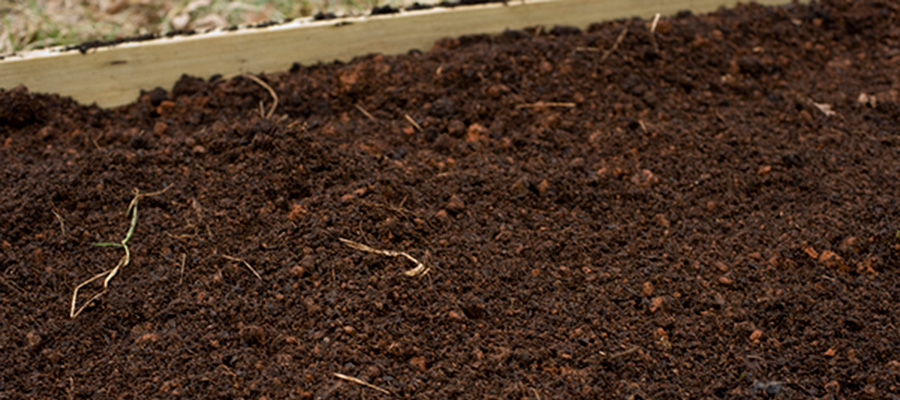
Sustainable soils Part 2 – How nutrients and soil biology work together to form sustainable soils and healthy plants
To understand how soils work in conjunction with plants, you really need to understand cellular biology; however, in this article, we are going to take a much simpler look at how soil nutrients, plant function and soil biology work together to form a sustainable environment.
As indicated in February’s article, most of us who are trying to “fix” or “maintain” our soils are concerned about the NPK numbers on fertilizer bags; however, knowing the nitrogen, phosphorus and potassium levels of a product is only the start to creating a sustainable soil. “Generations of gardeners have been brought up on 10-10-10 and 39-9-12, but nitrogen, phosphorus and potassium are just three of many nutrients that plants need to survive.”
Two additional nutrients to consider when evaluating soil’s sustainability are calcium (which stabilizes pH levels and biological activity, loosens soil, is a major component of plant cell walls and is a key indicator of weed growth) and magnesium (which holds soil particles together and is a major component that promotes plant growth). An equally important factor to consider is the relationship between calcium and magnesium. Evidence shows that soils low in calcium and high in magnesium tend to exhibit greater weed pressure and are prone to compaction. There are additional secondary nutrients and micronutrients to consider, but we’ll address that in future discussions.
A good soil test will provide you with nutrient levels currently in your soil. Here are a few suggestions to assist you:
- Don’t use a cheap test. Inexpensive tests are likely to paint an inaccurate picture of your soil, which can result in over-fertilization and further damage to your soil.
- Make sure your test is checking for soluble nutrient values. Our soils in the Midwest are typically heavy in clay, which binds up nutrients and makes them inaccessible to plants. Soluble values tell you the amount of that nutrient that is available for the plant.
- Make sure your test checks for the pH, organic matter percentage, cation exchange capacity (CEC) and base saturation levels. Ideally you are looking for a pH value of 6-7, 5-15 percent organic matter, CEC of 10-15 and a calcium to magnesium ratio of 7:1. Anything above or below these numbers will likely require inputs to adjust and this could take months or years.
So, now that we have a basic understanding of nutrients, how do we get the nutrients into the plants? This is where biology plays such a critical role in soil sustainability.
Plants have a symbiotic relationship with their soils. Plants give up nearly 60 percent of their energy to their roots, which release exudates. Exudates are a food source for bacteria and the start of the nutrient cycling process within the soil food web as well as the start of sustainability.
If you are applying a dry fertilizer to your lawn, garden or farm, and you have insufficient biological activity in the soil, there is no way for your grass or other plants to take up those necessary nutrients and very little defense against pests and diseases. If possible, have a bioassay test done on your soil to get a basic understanding of your biological activity.
In an organic environment, soil organisms need to digest the organic material (nutrients) and smaller organisms (soil food web) before any plant can benefit from the micronutrients. This is why synthetic fertilizers are so harmful and why we have become so dependent on them. Once the synthetic nutrient is absorbed into the plant, the runoff leaches into the ground, thus killing off the microorganisms in the soil. Once the organisms are gone, you become dependent on the synthetic fertilizer.
To speed up the nutrient cycling process, many organic farmers and land care professionals create and use custom blended compost teas. By suspending the micronutrients of quality compost in a liquid form, the plants and soil organisms can access the benefits of the compost/nutrients far more quickly and, if the soil is lacking in biodiversity, we can inoculate the soils with the necessary biology to ensure all necessary components are available for a healthy, sustainable soil.
Diversity is important because every soil is different. Having a wide variety of bacteria and fungi handles a wide variety of deficiencies. In order for the bi-products of the microbiology to be of any value, however, the soil food web needs to continue its cycle with the help of arthropods, nematodes and protozoa (the shredders, predators and grazers found in the third trophic level of the soil food web). Backyard Organics provides the necessary predators by using good quality compost, naturally rich with nematodes and protozoa, and extracting them using an actively aerated brew process. We then add a variety of appropriate nutrients that help the microbiology live and prosper until your soil is able to sustain itself.
So, if you are considering taking a healthier, more sustainable approach to maintaining your yard and gardens, consider not only the nutrients the plants need, but also the biology and the whole ecology necessary to sustain that environment.
Todd and Tara Rockweit are owners of Backyard Organics, LLC, Wisconsin’s first organic land care business accredited by NOFA, one of two organizations in the country that accredit Organic Land Care Professionals (AOLCPs). Since 2004, Backyard Organics has been supplying natural and organic products and services for people, pets and property, including a complete do-it-yourself program. To read more about our products and services, or if you would like to submit a question, please visit us at www.backyardorganics.net, email [email protected] or call 920.730.3253/888.200.0446.
